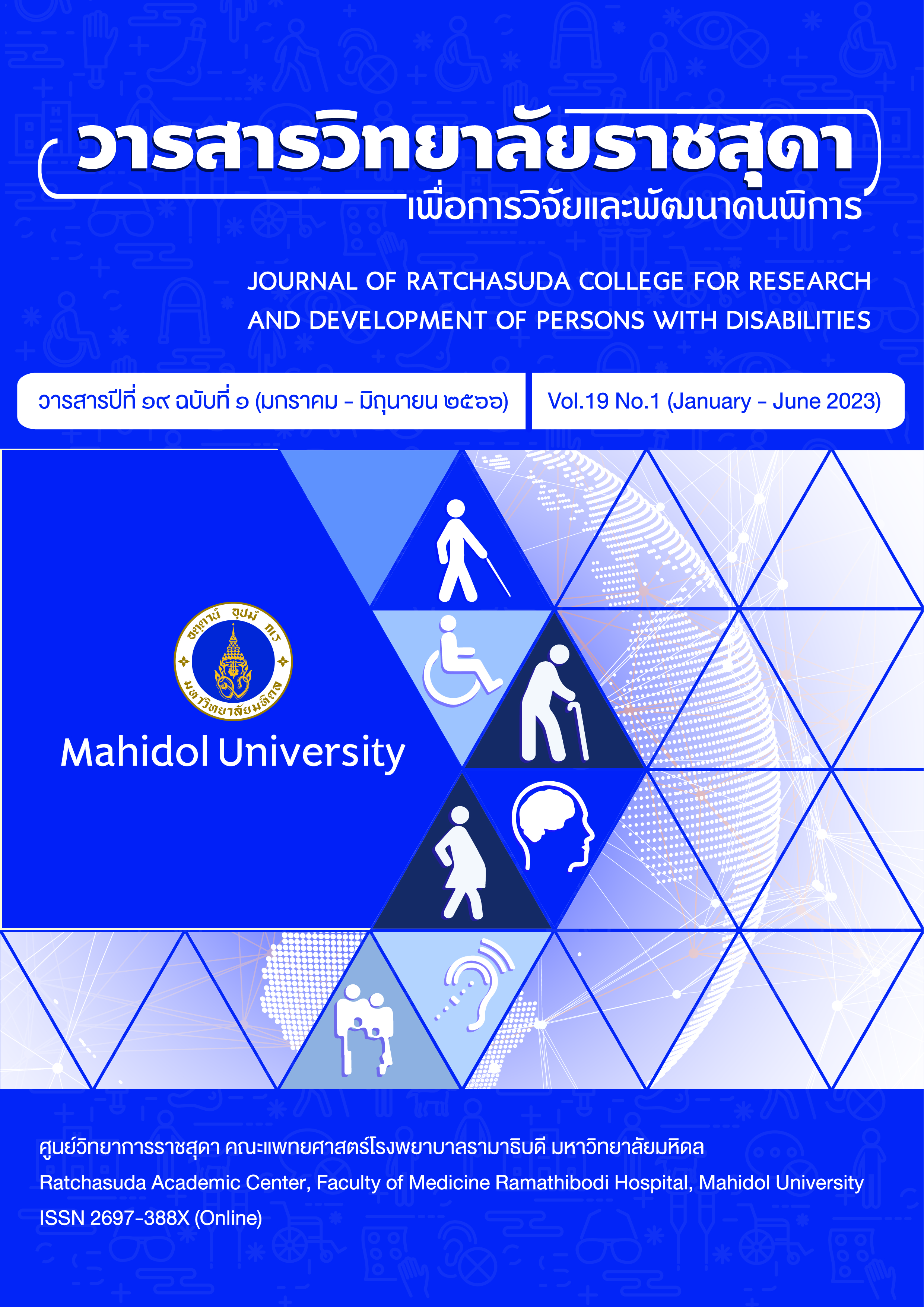A Study of Outdoor Learning Space Model in Schools for Children with Physical Disabilities by the Universal Design for Learning Principles
Keywords:
Universal Design for Learning, Outdoor Spaces, Children with Physical DisabilitiesAbstract
This paper reports on a study of the outdoor learning space model in schools for children with physical disabilities through the universal design for learning principles. This research aims to study the physical environment and to illustrate the outdoor learning space design guidelines that respond to the activities of children with physical disabilities. This paper identified three main topics of the universal design for learning principles: participation, perception, and expression to study the school's outdoor learning space model. Qualitative data analysis was used to analyze the information based on interviews with stakeholders and physical data collection. The results showed that 1). The physical environment that responds to the activities of children with physical disabilities enhances independence and relationships and reduces distractions. 2).The outdoor learning space designed by the universal design for learning principles supports accessibility and increases usability in terms of accessibility and facilitation. In summary, the research is to ensure that all children with physical disabilities have unobstructed access and participation in learning opportunities within their interests.
Downloads
References
Battele for Kids (2019). Our mission is to realize the power and promise of 21st century learning for every student. [Online]. Retrieved from http://www.battelleforkids.org/networks/p21.
CAST (2011). Universal design for learning guidelines. [Online]. Retrieved from https://udlguidelines.cast.org/?utm_source=castsite&lutm_medium=web&utm_campaign=none&utm_content=aboutudl.
Chaisamut, T. (2013). The Effect of Outdoor Activities on the Gross Motor Readiness of the First Year Preschoolers at Annalai School, Maung District, Samuthsakhorn. Veridian E-Journal, 6(3), 186-192.
Department of Empowerment of Persons with Disabilities (2020). Report on the situation of people with disabilities. [Online]. Retrieved from https://www.dep.go.th.
Harte, H. A. (2013). Universal Design and Outdoor Learning. Dimensions of Early Childhood, 41(3), 18-22.
Little, H., & Eager, D. (2010). Risk, challenge and safety: Implications for play quality and playground design. European Early Childhood Education Research Journal, 18(4), 497–513.
Limtasiri, O. (2021). Outdoor Learning Activities for Children. Journal of Humanities and Social Sciences Bansomdejchaopraya Rajabhat University, 15(1), 234-258b.
Limtasiri, O. (2017). Enhancing learning skills of learners in 21st century through outdoor education. Veridian E-Journal, 10(3), 1643-1658.
Stockton, H. (2013). Playgrounds unwelcoming to disabled children. [Online]. Retrieved from https://www.publicsource.org/playgrounds-unwelcoming-to-disabled-children.
Downloads
Published
How to Cite
Issue
Section
License
Copyright (c) 2023 Ratchasuda Academic Center, Faculty of Medicine Ramathibodi Hospital, Mahidol Universityบทความที่ได้รับการตีพิมพ์เป็นลิขสิทธิ์ของวารสารสถาบันราชสุดาเพื่อการวิจัยและพัฒนาคนพิการ






